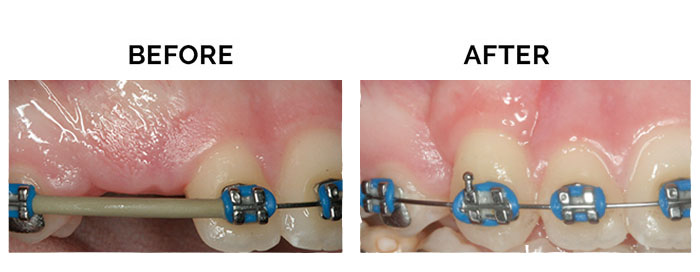
Impacted Canines
Impacted Canines
An impacted tooth simply means that it is “stuck” and cannot erupt into function. Frequently, wisdom teeth are impacted, but since they have no functional purpose, they can be extracted. On the other hand, the canine tooth, i.e., the maxillary cuspid (upper eyetooth) serves a great function in your “bite.” Unfortunately, the canine tooth is the second most common tooth to become impacted. This can have several consequences for a person as canines are very strong biting teeth and have the longest roots of any human teeth. They are meant to be the first teeth that touch when your jaws close together so they help guide the rest of your teeth into a proper bite.
Normally, the maxillary cuspid teeth are the last of the “front” teeth to develop into place. They usually come into place around the age of thirteen and help close any space left between the upper front teeth. If a cuspid tooth gets impacted, then efforts should be made to get it to erupt.
Recognizing an Impacted Maxillary Cuspid Tooth as Early as Possible is Key
The older the patient, the more likely an impacted eyetooth will not erupt on its own. Consequently, the American Association of Orthodontists recommends that a panorex screening x-ray, along with a dental examination, be performed on all dental patients at about seven years of age to analyze if there is a problem with the eruption of the adult teeth. It is important to determine whether there are any missing adult teeth.
Also, does it look like there will be issues with “overcrowding,” i.e., are there extra teeth present or unusual growths that are blocking the eruption of the eyetooth? One possible solution is an orthodontist placing braces to open spaces to allow for proper eruption of the adult teeth. Another treatment option, may require a periodontist, like Dr. Dianati, to extract over-retained baby teeth and/or selected adult teeth that are blocking the eruption of the important canine teeth. If the path can be cleared by the age of around twelve, then the outlook is good for the impacted eyetooth to erupt on its own.

What Happens If Space is Cleared and The Eyetooth Still Will Not Erupt When Proper Space Is Available?
In cases where the eyeteeth will not erupt spontaneously, the orthodontist and Dr. Dianati work together to get these eyeteeth to erupt. The most typical scenario calls for the orthodontist to place braces on the teeth to clear room for the impacted teeth to be moved into proper position. Once the space is ready, the orthodontist will refer the patient to Dr. Dianati, to have the impacted eyetooth exposed and bracketed.
The surgical procedure to obtain this result involves lifting the gum on top of the impacted tooth to expose the impacted tooth. If there is a baby tooth still present as well, then it will be removed at the same time. Once the tooth is exposed, Dr. Dianati will bond an orthodontic bracket to the exposed tooth. The bracket will have a miniature gold chain attached to it. Dr. Dianati guides the chain back to the orthodontic arch wire where it will be temporarily attached. Sometimes Dr. Dianati will need to leave the exposed impacted tooth completely uncovered and thereby suture the gum up high above the tooth or make a window in the gum covering the tooth. However, usually, the gum will be returned to its original location and sutured back. The chain will remain accessible as it exits a small hole in the gum.
Shortly after the surgery, the patient will return to the orthodontist. A rubber band will be attached to the chain to put a light eruptive pulling force on the impacted tooth. This will begin the process of moving the tooth into its proper place in the dental arch. This is a delicately controlled, slow process that may take up to a full year. The goal is to erupt the impacted tooth and not to extract it, hence precision is key. Once the tooth is moved into its final position, the gum around it will be evaluated to make sure it is sufficiently strong and healthy for functional use. As such, some patients require gum surgery to add thickness to the gum tissue at the subject site so it remains healthy during normal function.
These basic procedures can be adapted to apply to any impacted tooth in the mouth. Also, it is not that uncommon for both of the maxillary cuspids to be impacted.
What to Expect from Surgery to Expose and Bracket an Impacted Tooth?
The surgery to expose and bracket an impacted tooth is a very straightforward surgical procedure that is performed in Dr. Dianati’s office. Anesthesia and sedation are used to keep the patients as comfortable as possible. All treatment issues will be discussed in detail at your preoperative consultation with your doctor.
Call our office today at 818-584-1841 for a consultation to review enhancing your smile and your oral health.
